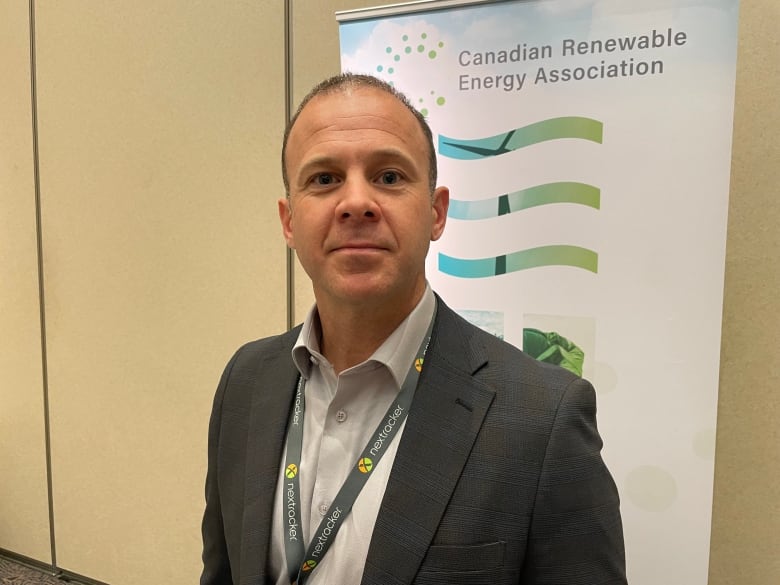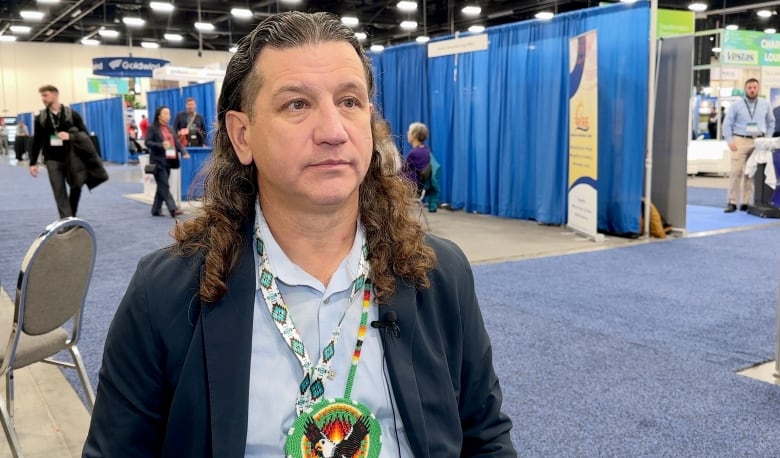
Eight months after the Alberta government lifted its moratorium on the development of new, large wind and solar electricity projects, investment has yet to return as companies choose instead to invest in other provinces.
In Alberta, the wind and solar electricity sector has been weighed down not only by the lasting chill of the moratorium but by further unpredictability caused by the province’s restructuring of its electricity system.
“It’s just like wave after wave of uncertainty and challenge in the market,” said Sol Hutson, general manager of foundation solutions with the solar tracker company Nextracker, speaking onstage earlier this week at the Electricity Transformation Canada conference in Calgary.
“When businesses are faced with those types of uncertainties, they pull back a little bit and they look for other places to invest.”
Last year, there were about 1,000 megawatts of new wind farm projects announced in Alberta, compared to just 50 megawatts this year, says Jeff Fuchs, a senior vice-president with Vestas, a global wind turbine manufacturer that operates in all 10 provinces.

“There’s just no market,” said Fuchs, describing the lack of investment in Alberta following the moratorium.
Fuchs, with Vestas, points to Quebec as a province where construction of new wind farms is picking up.
Interest growing coast-to-coast
Earlier this year, the Crown corporation Hydro-Québec announced it would begin constructing and operating wind farms with a target of generating 10,000 megawatts by 2035.
Elsewhere, the Crown utility B.C. Hydro has spent more than a year trying to attract new sources of clean electricity to keep pace with the soaring demand for power.
Ontario is in the midst of the largest procurement of new electricity in its history, which includes a pledge to use Crown land for renewable energy and building nearly 3,000 megawatts of new battery storage projects.
SaskPower has said it plans to add up to 3,000 megawatts of wind and solar to its grid by 2035.
Meanwhile, in Atlantic Canada, new federal legislation could kickstart the development of the offshore wind industry in Nova Scotia and Newfoundland and Labrador.

“There seems to be a more openness to get into battery storage and renewable projects,” in other provinces, said Jeremy Thompson, president of Eagle Spirit Business Development.
There is so little investment in Alberta that it feels like the moratorium is still in place, says Thompson, who has built partnerships between renewable energy companies and First Nations, including equity ownership agreements.
“Companies are looking at the opportunities elsewhere,” he said.
The slowdown is in contrast to just a few years ago, when Alberta led the country in wind and solar investment because of its abundance of sunshine and strong winds, especially in the southern part of the province.
But on Aug. 3, 2023, the province said no new renewable generation applications would be approved while it considered their effects on agriculture, the environment, municipalities and “pristine viewscapes.” That pause ended in February and a new series of draft guidelines outlining where and how solar and wind projects could proceed was unveiled.
The Alberta government points to project approvals to gauge the health of the sector. This year, 20 new renewable power projects have been approved by the Alberta Utilities Commission, it said, up from 12 last year and 19 the year before.
“Investment in renewables is alive and well in our province as we continue to see growth,” said Ashley Stevenson, press secretary for the Ministry of Affordability and Utilities.
The Alberta Electric System Operator (AESO) has since announced the province has also tasked it with designing a new electricity market. Public consultation will begin next week, while the recommended changes are expected to be announced before the end of the year, an AESO spokesperson said in a statement to CBC News.
“Alberta is an interesting place right now because we’re looking at a redesign of the energy market and we’re also looking at a redesign of transmission policy,” said Vittoria Bellissimo, president and CEO of the Canadian Renewable Energy Association.
“Until we get solid rules on what the market will look like and what the transmission policy and cost allocation will look like, it will be very difficult for projects, any kind of energy projects in the electricity space to move forward,” said Bellissimo.